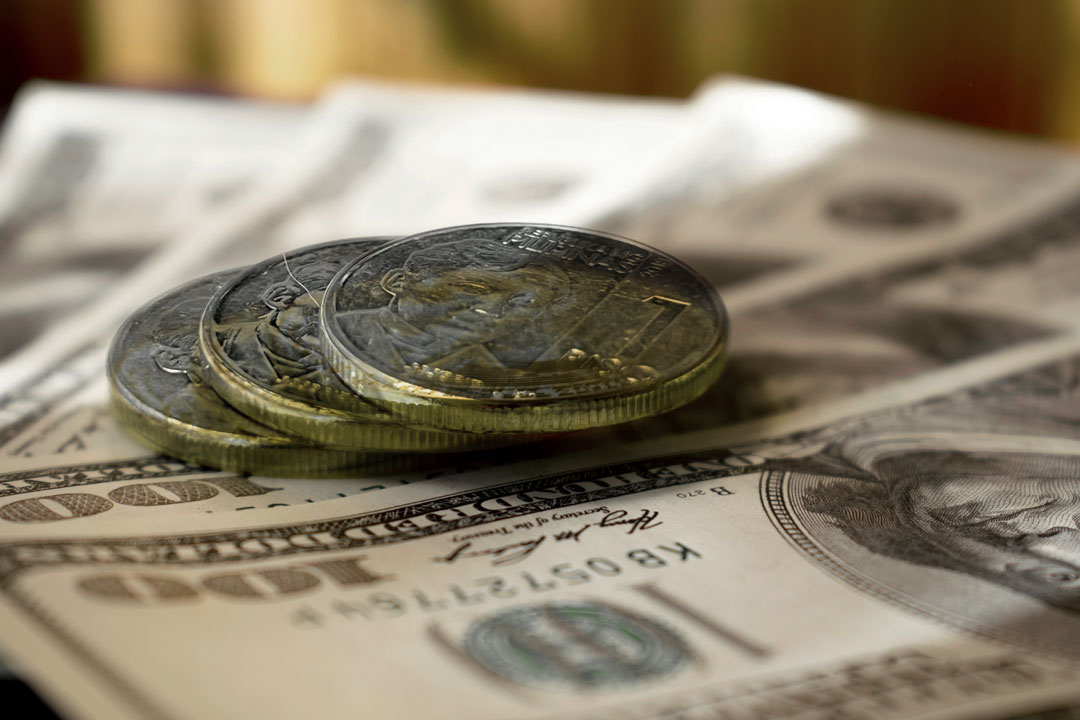Soft US data may keep peso at P56 level

THE PESO may stay at the P56 level this week as soft data out of the United States may weigh on the greenback.
On Friday, the local unit climbed for a fourth consecutive session, closing at P56.57 per dollar on Friday, rising by 3.5 centavos from its P56.605 finish on Thursday, Bankers Association of the Philippines data showed.
Week on week, the peso jumped by 60 centavos from its P57.17 per dollar close on June 20.
The peso gained on Friday as the dollar was “pressured by a softer US GDP (gross domestic product) reading for the first quarter,” a trader said in a phone interview.
The weak GDP report boosted expectations of a rate cut by the US Federal Reserve, Rizal Commercial Banking Corp. Chief Economist Michael L. Ricafort said in a Viber message.
For this week, the trader said peso-dollar trading will be driven by US data releases over the weekend, including the personal consumption expenditures (PCE) price index report, and any developments in the Iran-Israel conflict.
The trader sees the peso moving between P56.30 and P56.80 per dollar this week, while Mr. Ricafort expects it to range from P56.40 to P56.90.
In the Asian session on Friday, the US dollar wobbled, hovering near its lowest level in 3-1/2 years against the euro and sterling, as traders wagered on deeper US rate cuts while awaiting trade deals ahead of a July deadline for President Donald J. Trump’s tariffs, Reuters reported.
With the geopolitical tremors of the Israel-Iran conflict in the rear view after a ceasefire that appeared to be holding, market focus has been on US monetary policy.
The prospect of Mr. Trump announcing the next Federal Reserve chair, expected to be more dovish, earlier than usual to undermine the current Chair Jerome H. Powell has raised the odds of the central bank cutting rates.
Mr. Powell, whose term ends in May, was also interpreted as being more dovish last week in testimony to the US Congress, adding to expectations of more rate cuts. Traders are now pricing in 64 basis points (bps) of easing this year versus 46 bps expected on Friday.
Mr. Trump has repeatedly attacked Powell and called for rate cuts this year, stoking investor worries about the slow erosion of US central bank’s independence and credibility.
The dollar index, which measures the US unit versus six other currencies, was lingering near its lowest since March 2022 at 97.398, on course for a 2% decline in June, its sixth straight month in the red.
The index has dropped more than 10% this year as Mr. Trump’s tariffs stoke US growth worries, leading investors to look for alternatives.
A report on Friday showed that US consumer spending unexpectedly fell in May as the boost from the pre-emptive buying of goods like motor vehicles ahead of tariffs faded, while monthly inflation increases remained moderate.
A weekly jobs report on Thursday showed that continuing unemployment claims rose to the highest level since November 2021, while gross domestic product figures for the first quarter reflected a sharp downgrade to consumer spending.
Meanwhile, the US PCE price index gained 0.1% in May, matching the rise in April. It was curbed by a sharp decline in gasoline prices, which partially offset higher costs for furnishings and durable household equipment. Overall goods prices climbed 0.1%.
In the 12 months through May, PCE inflation increased 2.3% after climbing 2.2% in April.
Most economists argue price increases have remained moderate because businesses are still selling inventory accumulated before the tariffs went into effect. They expect inflation will start picking up, beginning with consumer price data for June.
Some of them believe softening demand could make it harder for businesses to pass on tariffs to consumers.
Stripping out the volatile food and energy components, the PCE price index increased 0.2% last month. That followed a 0.1% rise in the so-called core PCE inflation in April.
In the 12 months through May, core inflation advanced 2.7% after rising 2.6% in April.
The Fed tracks the PCE price measures for its 2% inflation target. The central bank last week left its benchmark overnight interest rate in the 4.25%-4.50% range, where it has been since December. Economists expect rate cuts to resume in September. — Aaron Michael C. Sy with Reuters



